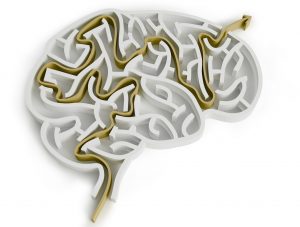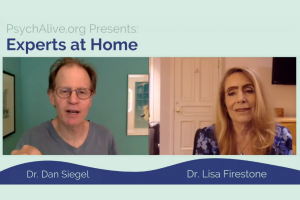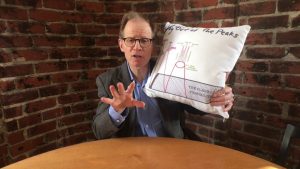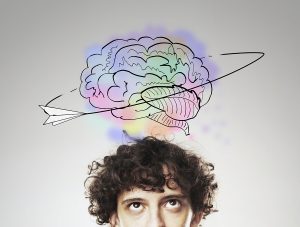Dr. Dan Siegel on Neuroplasticity: An Excerpt from Mind
Excerpted from Mind: A Journey to the Heart of Being Human by Daniel J. Siegel, copyright © 2017 by Mind Your Brain, Inc., printed with permission of the publisher, W. W. Norton & Company, Inc.
 An old teaching in neuroscience was that the brain had very localized functions and basically stopped growing with adulthood. We now know that the extremes of both views are not true. Functions in the brain—such as memory, emotion, or even motor activation—are widely distributed, not just found limited to one small area or another. Even strict divisions between sensory input and motor output appear not so fixed. The distribution of maps in the brain, those activated regions that work together to shape mental functions, seem to continually change in a dynamic way as we go through life’s experiences.
An old teaching in neuroscience was that the brain had very localized functions and basically stopped growing with adulthood. We now know that the extremes of both views are not true. Functions in the brain—such as memory, emotion, or even motor activation—are widely distributed, not just found limited to one small area or another. Even strict divisions between sensory input and motor output appear not so fixed. The distribution of maps in the brain, those activated regions that work together to shape mental functions, seem to continually change in a dynamic way as we go through life’s experiences.
The brain also continues to grow throughout the lifespan. Yes, there are early periods of important growth when the brain is vulnerable and needs certain input to shape its development in healthy ways. But the brain does not stop growing after childhood, or adolescence. Changing in the long-term in four fundamental ways, the brain takes in experience with the activation of neural firing. This firing, at a minimum, can lead to temporary, short-term chemical associations among neurons revealing immediate or short-term memory. But longer-term impacts on brain structure can happen even in adulthood. These changes can involve: 1) the growth of new neurons from neural stem cells, at least now documented in one area in adults, the hippocampus; 2) the growth and modulation of synaptic connections among neurons, changing their ways of communicating with one another; 3) the laying down of myelin by the supportive glial cells, enabling action potentials of ions flowing in and out of the neurons’ membranes to stream 100 times faster and the resting or refractory period between firings to be 30 times briefer (30 X 100 = 3,000 times not only faster, but more coordinated in timing and distribution); and 4) the alteration of the non-DNA molecules that sit on top of the DNA called epigenetic regulators, such as histones and methyl groups. Epigenetic changes are induced by experience and then alter how future experiences will allow the genes to be expressed, proteins produced, and structural changes to unfold.
These ways the brain is altered by experience are a part of what is called the neuroplasticity of the brain. The discoveries of how moldable the brain is in response to experience would soon create a revolution in how we can change with experience—and open the doors to how relationships and the mind might be understood to alter the brain itself.
These findings can be woven with our discussion of mind as emerging from energy and information flow, within and between. How attention directs that flow will activate certain neural pathways and activate certain interpersonal experiences. Within us, attention drives the activation of neurons in the brain, at a minimum. Perhaps this inner attention drives energy flow throughout the whole body. When we communicate with one another, too, as I write and you read these words, we are also harnessing the power of attention to direct the flow of energy and its symbolic forms we call information. Energy and information flow between us as well as within us. With shifts in neural activation, the opportunity to change the structure of the brain is created. With shifts in external attention, the opportunity is created to alter the internal neural firings that shape not only the activity in the brain in the moment, but also alter the structural connections in the brains of those engaged in the interactions, in the communication, among people in the world. What this suggests is that the mind, within and between, can change the structure of the brain.
The way I have come to recall this connection of attention shaping energy and information flow to neural activity and growth is this way: Where attention goes, neural firing flows and neural connection grows. This not only helps us understand how psychotherapy and parenting work, but also how our societies shape our minds as well.
To learn more read Mind: A Journey to the Heart of Being Human by Daniel J. Siegel
Tags: Dr. Dan Siegel, neurobiology, neuroplasticity, neuroscience, the brainOne Comment
Leave a Reply
You must be logged in to post a comment.










Hi any info on tremors? My husband is experiencing tremors and drooling. He is working with ND doctor who is a cranial sacral also stating my husband has a pinched nerve in his neck.